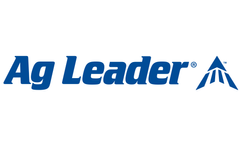Corn Harvesting Combine Articles & Analysis
5 articles found
Between their fields Seeman estimates around 725 acres of corn and 380 acres of beans were affected by the storm. “The fields vary by area, certain corn varieties in certain fields went down. ...
A corn combine harvester is a machine used for the corn harvest which both improves the harvest efficient and saves labor cost. Currently there are a variety of corn harvesters in the market, then how to choose a suitable corn ...
Production of peanut (Arachis hypogaea L.) in reduced tillage systems has increased in the United States during the past decade. However, interactions of tillage system and crop rotation have not been thoroughly investigated for large-seeded, Virginia market type peanut. Research was conducted at two locations in North Carolina during 1999 to 2006 to compare yield of corn (Zea mays L.), cotton ...
Perpetuating cereal cover crops through self-seeding may increase adoption by reducing risk and cost. Winter rye (Secale cereale L.), wheat (Triticum aestivum L.), and triticale (x Triticosecale Wittmack) were used to develop self-seeding cover crop systems in a soybean [Glycine max (L.) Merr.]–corn (Zea mays L.) rotation. Cereal cover crops were planted in varying row spacing configurations and ...
Monitoring and mapping of U.S. croplands has long been a primary goal of many users of earth observation satellite data. The advantages of using low spatial and high temporal resolution data are (i) increased ability to monitor the phenological change of crop plants, and (ii) the possibility of generating consistent large area crop cover maps. This study investigates the potential of 500-m MODIS ...



